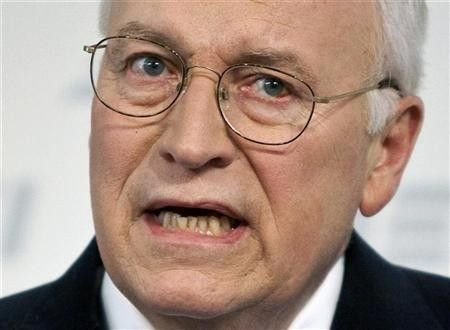Dick Cheney Waited Longer Than Average For Heart Transplant

CHICAGO (Reuters) - At 71, former Vice President Dick Cheney was older than average for a heart transplant and had to wait longer than the typical patient as well -- 20 months compared with a year or less.
The fact that he was still able to receive a donor heart after surviving five heart attacks shows he must have been in excellent health, doctors said on Sunday.
They also pointed to advances in care that have made it possible for older patients to still be good transplant candidates. Cheney is recovering at a Washington-area hospital after undergoing the surgery on Saturday.
He's obviously received superb care, said Dr. James Kirklin, director of cardiothoracic surgery at the University of Alabama at Birmingham and a recent past president of the International Society of Heart & Lung Transplantation.
He's an elderly man who likely has taken very, very good care of himself to be in this good shape at age 71. It appears that he has been relatively lucky to have avoided major organ problems that would have precluded a transplant, said Kirklin, who is not treating Cheney.
Hospitals have traditionally set 65 as the upper limit for heart transplant. But older patients increasingly are getting them, and there is no absolute cut-off age.
Dick Cheney's overall risk would probably be a bit higher than a 60-year-old, but the most important thing would be the function of his organs, which we analyze in great detail, Kirklin.
Dr. Valluvan Jeevanandam, chief of cardio-thoracic surgery at the University of Chicago Medical Center, said his hospital has been doing transplants on increasingly older patients.
They're not that different. The key is co-morbidities, he said, referring to other chronic conditions that affect the health of the transplant recipient.
Older patients undergo a rigorous evaluation and are screened for cancer, neurological abnormalities, kidney and liver dysfunction and other problems.
Jeevanandam said a 71-old-year-old man has a 10-year survival rate of 60 percent to 65 percent. I can't predict how Cheney will do, he said.
EXTENDING LIFESPAN
Assuming that Cheney's kidneys and other organ systems were working properly at the time of the transplant and he suffers no issues with organ rejection, the latest procedure could extend the former vice president's life by a decade or so, said Dr. Randall Starling, a specialist in cardiac transplants at the Cleveland Clinic.
They have to be an excellent candidate without significant risk factors because age itself is a risk factor, Starling said.
In order to qualify for a heart transplant, patients must have end-stage heart failure but be otherwise healthy enough to undergo heart transplant surgery. The procedure uses a donor heart is implanted into the patient to replace a heart that has become so diseased it is no longer able to pump enough blood to keep organs working properly.
Cheney has survived five heart attacks -- his first at age 37 -- and his care has run the gambit of interventions, ranging from coronary stents to prop open blocked heart arteries, heart bypass surgery to re-route blood flow around diseased arteries, an implantable heart defibrillator to safeguard against potentially dangerous rhythms.
In July 2010, Cheney underwent a procedure to have an artificial heart pump implanted called a ventricular assist device or VAD that takes over the pumping function of a diseased heart for patients in end-stage heart failure.
The device is often used as a bridge to a transplant, offering a way of keeping organ systems in good enough working order for the patient to accept a donor heart.
Doctors said Cheney could have stayed on the VAD, which has increasingly become a permanent solution for some patients.
Cheney had been on a waiting list for a heart transplant for 20 months, which was a bit longer than the average wait time of six months to a year, according to a study published last year in the journal Circulation.
About 5 million Americans have heart failure, and an estimated 400,000 to 700,000 new cases of heart failure are diagnosed each year, according to the Heart Failure Society of America.
Some 3,000 Americans are on the waiting list for a heart transplant on any given day, and only about 2,000 donor hearts are available each year, according to the National Heart Lung & Blood Institute.
He waited quite a long time -- nearly two years on a device. Even though the waiting lists are very long, that would be an extended wait for a heart transplant, Kirklin said.
Patients on VAD devices can experience blood clots and infections, and doctors said it was not clear whether a complication with his VAD device may have suddenly moved Cheney higher on the transplant list.
Did he crash in terms of his condition? How did he get to the top of the (wait) list? There are a lot of things doctors and hospitals can do to get a patient to the top of the list, said Dr. Eric Topol of Scripps Clinic Torrey Pines in California.
(Editing by Cynthia Osterman and Michele Gershberg)
© Copyright Thomson Reuters 2024. All rights reserved.






















